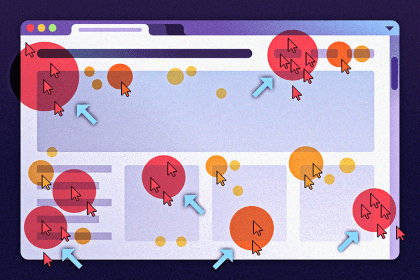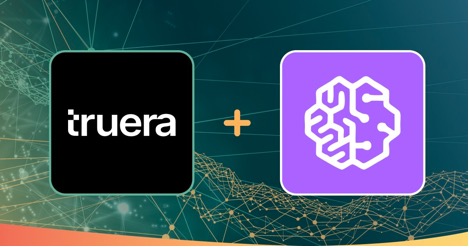Introduction
Quantum computing represents a significant advancement in processing power, utilizing the principles of quantum mechanics to perform complex calculations at unprecedented speeds. This cutting-edge technology has the potential to revolutionize various fields, including artificial intelligence (AI).
By offering vast computational resources and the ability to solve intricate optimization problems, quantum computing could enable AI systems to analyze massive datasets and identify patterns beyond the capabilities of classical computers. The synergy between quantum computing and AI could accelerate the discovery of new algorithms and the realization of true machine intelligence, ushering in a new era of technological advancement.
Learning Objectives
- Understand the fundamentals of quantum computing and its transformative impact on computational capacity.
- Explore the synergistic relationship between quantum computing and AI and how they drive each other’s progress.
- Assess the potential of quantum computing for solving complex problems that currently limit AI.
- Examine the future implications of quantum-enhanced AI in various industries.
- Identify the challenges and opportunities in integrating quantum computing with artificial intelligence.
This article was published as a part of the Data Science Blogathon.
Understanding Quantum Computing
Quantum computing operates on the principles of quantum theory, diverging from classical computing by using qubits instead of bits. These qubits exist in superposition, allowing them to be in multiple states simultaneously, exponentially expanding computational capacity. Quantum entanglement, another quantum phenomenon, links qubits in a way that the state of one instantaneously influences the state of another, regardless of distance. This property is pivotal for quantum computing, enabling parallelism and interconnectivity unattainable in classical systems.
The inherent advantages of quantum computing lie in its potential to perform calculations at orders of magnitude faster than the most powerful supercomputers today. It can potentially solve complex problems that are intractable for classical computers, such as molecular modeling, cryptographic security, and optimization challenges in AI.
Quantum Computing in AI
Quantum computing heralds a transformative era in AI, reshaping machine learning, a field deeply rooted in data processing and analysis. Quantum computing operates in a realm where data exists in multiple states, thanks to qubits, allowing for handling computations that are exponentially more complex than what current supercomputers can achieve.
Quantum computing’s prowess lies in its ability to solve complex problems much more efficiently than classical computers. It can tackle combinatorial complexity, which is challenging or impossible for classical computers to solve in a reasonable timeframe, making it tractable on a quantum computer.
Quantum computing also enhances AI’s predictive capabilities by processing vast datasets more efficiently. This efficiency can significantly advance AI’s ability to predict outcomes from large and complex data sets, such as in climate modeling or personalized medicine.
The phenomena of quantum entanglement and superposition open up new methodologies in AI research. Quantum entanglement allows for creating correlations between qubits even when separated by large distances, offering novel ways to process and interpret data. Quantum superposition provides the ability to evaluate multiple probabilities simultaneously, enhancing decision-making processes in AI.
Quantum Algorithms for AI
Two quantum algorithms that significantly contribute to AI advancements are:
- Grover’s Algorithm Enhanced Unstructured Search: Provides a quadratic speedup in searching unstructured databases, foundational in AI for tasks like information retrieval and decision-making processes.
- Quantum Fourier Transform (QFT) Advanced Signal Processing: Instrumental in processing time-series data, pivotal for AI applications in market trend analysis, weather forecasting, and speech recognition.
Practical Example Using Qiskit
To demonstrate the capabilities of quantum computing in enhancing AI, we will delve into a hands-on example using IBM’s Qiskit, an accessible quantum computing platform. Qiskit enables users to create and test quantum circuits, the fundamental components of quantum computing.
The primary objective of this demonstration is to construct and simulate a quantum circuit, illustrating key quantum computing concepts such as superposition, entanglement, and quantum state manipulation. This example is a foundational exploration into how quantum computing can be harnessed for advanced computational tasks in AI research and applications.
Setting Up the Environment
First, ensure that Python is installed on your system. Then, install Qiskit by running pip install qiskit in your command line interface or notebooks. Import the necessary libraries:
from qiskit import QuantumCircuit, Aer, execute
from qiskit.visualization import plot_histogram
Building a Simple Quantum Circuit
Create a Quantum Circuit:
# Initialize a Quantum Circuit with 2 qubits and 2 classical bits
qc = QuantumCircuit(2, 2)
Apply Quantum Gates:
# Apply a Hadamard gate on the first qubit
qc.h(0)
# Apply a CNOT gate with the first qubit as control and the second as target
qc.cx(0, 1)
# Measure the qubits
qc.measure([0, 1], [0, 1])
This circuit creates a simple entanglement between two qubits. The Hadamard gate puts the first qubit into a superposition state, and the CNOT gate entangles it with the second qubit.
Code Demonstration and Explanation
Execute the quantum circuit using the Qiskit Aer simulator:
# Use Aer's qasm_simulator simulator
simulator = Aer.get_backend('qasm_simulator')
# Execute the circuit on the qasm simulator
job = execute(qc, simulator, shots=1000)
# Grab results from the job
result = job.result()
# Return counts
counts = result.get_counts(qc)
print("Total count for 00 and 11 are:", counts)
This code simulates the quantum circuit 1000 times and retrieves the count of the outcomes.
Interpreting the Results
Visualize the results with a histogram:
# Plot a histogram
plot_histogram(counts)
This histogram depicts the distribution of outcomes. Ideally, the states 00 and 11 should occur with roughly equal probability, demonstrating the entanglement created in the circuit. The absence of 01 and 10 states confirms the entanglement, as measuring one qubit in state 0 always results in the other qubit being in state 0 and vice versa.
Current Challenges and Future Prospects
Technical Challenges
- Error Correction and Qubit Stability: Developing robust error correction methods is essential to maintain qubit stability for reliable quantum computing.
- Scalability: Scaling up quantum systems to accommodate more qubits without losing performance is a critical technical challenge.
Resource Allocation
- Financial Investment: The development of quantum computing technology requires substantial financial backing.
- Infrastructure Development: Building the necessary infrastructure, including specialized facilities for quantum computer development and operation, adds to the resource challenges.
Industrial Applications and Prospects
The pharmaceutical industry stands to benefit greatly from quantum computing, as it promises to accelerate drug discovery processes by efficiently simulating molecular interactions.























